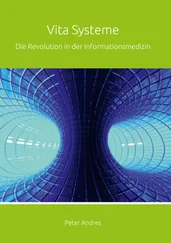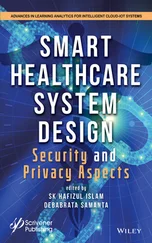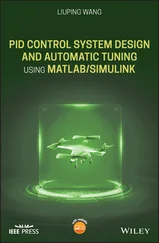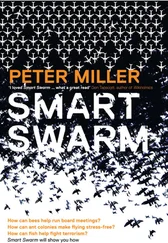Editorial Office The Atrium, Southern Gate, Chichester, West Sussex, PO19 8SQ, UK
For details of our global editorial offices, customer services, and more information about Wiley products visit us at www.wiley.com.
Wiley also publishes its books in a variety of electronic formats and by print‐on‐demand. Some content that appears in standard print versions of this book may not be available in other formats.
Limit of Liability/Disclaimer of Warranty While the publisher and authors have used their best efforts in preparing this work, they make no representations or warranties with respect to the accuracy or completeness of the contents of this work and specifically disclaim all warranties, including without limitation any implied warranties of merchantability or fitness for a particular purpose. No warranty may be created or extended by sales representatives, written sales materials or promotional statements for this work. The fact that an organization, website, or product is referred to in this work as a citation and/or potential source of further information does not mean that the publisher and authors endorse the information or services the organization, website, or product may provide or recommendations it may make. This work is sold with the understanding that the publisher is not engaged in rendering professional services. The advice and strategies contained herein may not be suitable for your situation. You should consult with a specialist where appropriate. Further, readers should be aware that websites listed in this work may have changed or disappeared between when this work was written and when it is read. Neither the publisher nor authors shall be liable for any loss of profit or any other commercial damages, including but not limited to special, incidental, consequential, or other damages.
Library of Congress Cataloging‐in‐Publication Data
Name: Minns, Peter D., author.
Title: Digital system design using FSMs : a practical learning approach / Peter D. Minns.
Description: Hoboken, NJ : Wiley, 2021. | Includes bibliographical references and index.
Identifiers: LCCN 2021015256 (print) | LCCN 2021015257 (ebook) | ISBN 9781119782704 (hardback) | ISBN 9781119782711 (adobe pdf) | ISBN 9781119782728 (epub)
Subjects: LCSH: Sequential machine theory. | Digital electronics.
Classification: LCC QA267.5.S4 M56 2021 (print) | LCC QA267.5.S4 (ebook) | DDC 621.381501/51135–dc23
LC record available at https://lccn.loc.gov/2021015256LC ebook record available at https://lccn.loc.gov/2021015257
Cover Design: Wiley
Cover Image: (inset) Image by Peter Minns, (background) © Govindanmarudhai/Getty Images
This book is, in large part, a development of FSM‐Based Digital Design using Verilog HDL (Minns and Elliott 2008), a book I wrote with Ian Elliott. It is rather unusual in that it forms a linear programmed learning text in all chapters to help readers learn on their own.
The intention in this current version is to make use of programmed learning methods in which the chapters are made up of frames that must be read in a sequential manner. It is hoped that the book will help readers in their study of the material. There is also new content in Chapter 6, Appendix A5, and Appendix A6, as well as consideration of unused states in finite state machines (FSMs).
It is assumed that the reader has a good understanding of Verilog HDL; however, the interested reader will find that Chapters 6, 7, and 8 of Minns and Elliott (2008) provide a very good account of Verilog HDL. Wiley make it possible to purchase these chapters on request for a small fee.
Note that in this version of the book the reader is given help to assist them as they progress through this book.
Indeed, Chapters 3, 4, 5, and 7as well as some of the appendices include examples of FSMs with Verilog HDL for illustrated examples. Use is also made of the Digital logic simulation program Logisimto help the reader become familiar with using FSMs in the development of their work. This Logisim Simulatoris freely available throughout the world to run on Windows, OS X, and Linux Operating Systems (see Appendix A2for details).
The chapters are organized as follows.
Chapter 1 covers the introductory ideas of what FSMs are and how to represent them using a state diagram.
Chapter 2 covers the use of external devices and how to control them with an FSM.
Chapter 3 looks at how to synthesize FSMs using T type flip‐flops, then D type flip‐flops.
Chapter 4 introduces asynchronous FSM design.
Chapter 5 looks at the use of the one hot method of synchronous FSM design applied to clocked FSM designs.
Chapter 6 , a new chapter, looks at applying an FSM to event‐driven systems, and considers one hot ideas and the one hot method.
Chapter 7 deals with Petri nets and how they can be used to synthesize electronic circuits using both sequential and parallel state machine design. This allows FSM‐based systems to support both sequential and parallel structures.
There are six appendices covering the necessary aspects of FSM systems that the reader needs to understand in the support of the FSM work. These are written in a more formal manner (i.e. not using frame method or programmed learning).
Appendix A1 looks at the logic gates and Boolean algebra used in this book. This should help those readers who may not have done much work on Boolean algebra for some time.
Appendix A2 is a tutorial on how to use the simulation programs and the Verilog Hardware Descriptive Language (HDL) with the SynaptiCAD system as well as a short introduction on the use of the gate logic simulator Logisim.
Appendix A3 covers the use of counters and shift registers as used in a number of the tutorials in this book. The reader should find them very useful.
Appendix A4 covers the use of behavioural Verilog HDL with some examples to help the reader become familiar with its use in the design of FSM‐based systems.
Appendix A5 looks at the way an FSM can be designed using digital hardware that can be programmed to produce programmable FSM systems. Tutorial examples are introduced to illustrate how this works.
Appendix A6 looks at how a rotation direction indicator can be implemented using an event‐driven FSM.
This book provides enough information for the reader to learn how to design their own FSMs and simulate them using the hardware descriptive language Verilog HDL.
I hope that the content of this book is both interesting and useful, and that it helps readers to learn more about digital system design using FSMs. I have used these techniques for many years, in lectures and when working with companies, and have found them really helpful.
Peter Minns BSc(h) PhD CENG MIET (retired)
Access to Wiley Web for my Verilog HDL and Logisim files:
www.wiley.com\go\minns\digitalsystemdesign
I would like to thank all those who helped in the proofreading of this book, in particular those who have looked at specific chapters and especially Kathleen Minns for her help in the proofreading of the entire manuscript.
Also thanks to Ian Elliott for introducing the Logisim digital simulation program.
Special thanks go to my commissioning editor Sandra Grayson and managing editor Juliet Booker for their kind support and guidance in the preparation of this book as well as the Wiley publishing team.
Читать дальше












